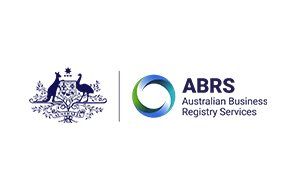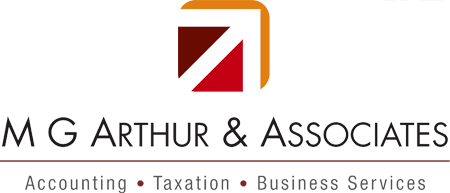Superannuation - Know your numbers

FOR EMPLOYERS
 |
When do you con tribute? As an employer, you will have to pay super for each employee who is 18 years or older and is paid $450 or more (before tax) a month. It's not n ecessary that the employee be working full-time, super is also payable for part-time and casual employee. |
| |
What is the super rate and how is it calculated?
For the financial year 2015, super is payable at the rate of 9.5% of ordinary time earnings (OTE) of an employee. This rate shall remain constant up to 2021.
| TIP! There is a wide definition for 'ordinary time earning' (OTE) including allowances and bonuses. It does not include overtime though. Click here for a list of what's in and what's out! |
When do you pay the super?
An Employer is required to pay super into their employees' complying superannuation funds every quarter by :
- Quarter 1 July to 30 Sept - Due date 28 Oct
- Quarter 1 Oct to 31 Dec - Due date 28 Jan
- Quarter 1 Jan to 31 March - Due date 28 April
- Quarter 1 April to 30 June - Due date 28 July
What happens if you don't contribute by the due date?
Failure to deposit the amount by due dates would require you to lodge a Super Guarantee Charge (SGC) statement. In the SGC, you are required to pay the shortfall super (calculated on total Salary and not just OTE) along with interest and administration fees. What's more, employer also misses out a tax deduction for the late super contributed!
| Tip! And that's not where it stops, directors of a company could be held personally liable for a penalty equal to the unpaid super if SGC remains unreported beyond 3 months from due date. |
Employers are required to report additional super contribution made for their employees on their Annual PAYG Payment Summary Statements (Group Certificates). This includes salary sacrificed super and insurance contributions. RESC are used by Centrelink to identify indirect benefits and minimize social support benefits.
What documentation do you need to keep?
Lastly, as an Employer you must keep the following records for 5 year that show:
- the amount of super you paid for each employee and how it was calculated
- that you have offered your eligible employees a choice of super fund (penalties apply for failure to offer super choice)
- how you calculated any reportable employer super contributions.
FOR INDIVIDUALS
 |
Apart from your employer's contr ibution, you can contribute extra to your super at any time to increase your retirement savings. However, there are limits on how much you can contribute before you pay extra tax. Different limits (known as caps) apply depend on the type of contributions made into your super fund. What are Concessional (before-tax) contributions? Concessional contributions are contributions made into your super fund from your income before any tax is paid on them. This can include;
|
Concessional contributions made upto to the above cap are taxed at 15% in your Superfund.
| TIP! As an employee you can contribute towards your concessional caps by salary sacrificing. As self employed you can do the same by directly contributing to your super (provided you pass the 10% employment test) |
What is Excess Contribution Tax?
Up to 30.6.2013, any concessional contribution over the cap could be taxed at highest marginal tax rate of 45%. From 1.7.2013, excess concessional contribution can now be taxed at your personal marginal tax rate.
What are Non-concessional (after-tax) contributions?
Non-concessional contributions are generally contributions you make into your super fund from income on which tax has already been paid.
They include:
- personal contributions you make from your after-tax pay that you are not allowed to claim as an income tax deduction
- contributions which exceeded your before-tax cap
- contributions in excess of your capital gains tax (CGT) cap amount
- contributions your spouse makes to your fund on your behalf.
| For Financial Year 2014-15 | Non Concessional Contributions Cap |
| Contributions in any one year | $180, 000 |
| Brought forward (over 3 years period) | $ 540, 000 |
What is Excess Non Concessional Contribution Tax?

What is the new Rich Man's Tax?
Starting 1 July 2012, the then Labor Government decided that for individual earning more than /style00K a year, 15% tax on their super was too little! So they decided that all rich people (with adjusted income greater than /style00K a year) will pay 30% tax on their pre-tax super contribution. This is the new Division 293 tax, fondly called by us as Rich man's Tax. Because of this new tax regime, individuals earning more than /style00K a year will not be able to avail concessional tax rate of 15%!! This reduces their tax savings on super contributions to 19% (49% - 30%).
How to minimise costs in your super?
Many taxpayers hold multiple superfund accounts, usually as a result of their changing jobs. Each superfund charges fees and charges thereby hurting your super savings. Although not an easy exercise, it is highly advisable to combine your multiple super accounts to any one account of your choice, thereby reducing costs and increasing retirement savings.
Tip!
Don't lose your super money! You can transfer super online from one fund to another, by simply using your my.gov.au login.
FOR SELF MANAGED SUPERFUNDS (SMSFs)
Yes! You can manage your own super funds but there are very stringent super provided you conform to super and legal laws that an SMSF has to comply with. Will this suit you, benefit you, challenge you? For more details visit our FAQ.
How is your SMSF Taxed?
- Tax on Contributions – 15%
- Tax on income – Non Pension Phase – 15%, Pension Phase – 0%
- Tax on Capital Gains – Non Pension Phase – 10%, Pension Phase – 0%
Tip!
Various strategies such as Super Gearing, TRIS + Salary Sacrifice, Pension drawdown + Recontribution Strageties, etc. can be used in your SMSF to considerably reduce your overall tax bill.
What are the rules governing Accepting Contributions?
As trustee of your SMSF, you can accept following types of contribution;
- Employer contributions
- Personal contributions (pre or post tax) subject to Contributions Caps
- Roll-overs
Tip!
SMSFs are now required to set up SMSF SuperStream for accepting contributions from unrelated employers. You can access a list SMSF messaging providers
here
.
What investment options are available in SMSFs?
As trustee of your SMSF you are required to choose appropriate investments;
- Short to Long term with focus on retirement benefits.
- Can include direct shares and property investments.
- Can include property purchase through borrowings.
- Can include overseas assets (property, shares, term deposits).
Tip!
You can use your SMSF to invest overseas. Stringent rules and regulations apply. Read more on SMSF investment in India in our
newsletter
.
What are the rules governing Paying Benefits?
In other words, how and when can you access your super balance. Most super balances are preserved till a 'condition of release' is met. Some of the most common ones are;
- Reaching age of 65.
- Reaching preservation age and starting Transition to Retirement Pension (TRIS)
- Reaching preservation age and retiring permanently
- Accessing funds from Unrestricted Non Preserved Benefits.
- Special Medical Condition
- Death or Terminal Illness
- Severe Financial Hardship or Compassionate Grounds
Tips!
By using some of the pension strategies with other strategies, you could reduce our over all tax and increase income in hand. Similarly, you could use a pension + re-contribution strategy to reduce death duty. However, illegal early access of your super could result in heavy taxes & fines.
What is the new New Penalty Regime?

SMSF trustees can now be held personally responsible for delays and defaults in their duties. See below details of a new penalty regime for SMSFs
Breach Part
Penalty Units
Amounts
Failure to appoint an investment manager in writing when one is appointed
5
$850
Failure to provide the Tax Office with information on the approved form within the prescribed period upon establishing a fund
5
$850
Failure to complete a form with requested information provided by the Tax Office as part of its statistical program
5
$850
Failure to comply with Tax Office education directive
10
$1,700
Failure to have financial statements prepared, signed and retained for at least five years
10
$1,700
Failure to keep trustee minutes for at least 10 years
10
$1,700
Failure to keep records of change of trustees for at least 10 years
10
$1,700
Failure to sign trustee declaration within 21 days of appointment and keeping for at least 10 years
10
$1,700
Failure to keep member reports for 10 years
10
$1,700
Failure to notify the Tax Office of a change of SMSF status e.g. fund ceasing to be an SMSF
20
$3,400
Failure to comply with operating standards
20
$3,400
Lending or providing financial assistance to fund members or relatives
60
$10,200
Borrowing, except as permitted e.g. limited recourse borrowing arrangement
60
$10,200
Contravention of in-house asset rules
60
$10,200
Failure to notify Tax Office of an event that has significant adverse effects on the fund's financial position
60
$10,200
With hosts of opportunities and minefield of pitfalls, it is best to tread carefully and ensure you are on the right side of law. As Superannuation Specialists we can help you understand and manage your Tax and SIS Law compliance. For more details, click here
or book an appointment
with us.
 |
What is the new Rich Man's Tax?
Starting 1 July 2012, the then Labor Government decided that for individual earning more than /style00K a year, 15% tax on their super was too little! So they decided that all rich people (with adjusted income greater than /style00K a year) will pay 30% tax on their pre-tax super contribution. This is the new Division 293 tax, fondly called by us as Rich man's Tax. Because of this new tax regime, individuals earning more than /style00K a year will not be able to avail concessional tax rate of 15%!! This reduces their tax savings on super contributions to 19% (49% - 30%). |
How to minimise costs in your super?
Many taxpayers hold multiple superfund accounts, usually as a result of their changing jobs. Each superfund charges fees and charges thereby hurting your super savings. Although not an easy exercise, it is highly advisable to combine your multiple super accounts to any one account of your choice, thereby reducing costs and increasing retirement savings.
| Tip! Don't lose your super money! You can transfer super online from one fund to another, by simply using your my.gov.au login. |
FOR SELF MANAGED SUPERFUNDS (SMSFs)
Yes! You can manage your own super funds but there are very stringent super provided you conform to super and legal laws that an SMSF has to comply with. Will this suit you, benefit you, challenge you? For more details visit our FAQ.
How is your SMSF Taxed?
- Tax on Contributions – 15%
- Tax on income – Non Pension Phase – 15%, Pension Phase – 0%
- Tax on Capital Gains – Non Pension Phase – 10%, Pension Phase – 0%
| Tip! Various strategies such as Super Gearing, TRIS + Salary Sacrifice, Pension drawdown + Recontribution Strageties, etc. can be used in your SMSF to considerably reduce your overall tax bill. |
What are the rules governing Accepting Contributions?
As trustee of your SMSF, you can accept following types of contribution;
- Employer contributions
- Personal contributions (pre or post tax) subject to Contributions Caps
- Roll-overs
| Tip! SMSFs are now required to set up SMSF SuperStream for accepting contributions from unrelated employers. You can access a list SMSF messaging providers here . |
What investment options are available in SMSFs?
As trustee of your SMSF you are required to choose appropriate investments;
- Short to Long term with focus on retirement benefits.
- Can include direct shares and property investments.
- Can include property purchase through borrowings.
- Can include overseas assets (property, shares, term deposits).
| Tip! You can use your SMSF to invest overseas. Stringent rules and regulations apply. Read more on SMSF investment in India in our newsletter . |
What are the rules governing Paying Benefits?
In other words, how and when can you access your super balance. Most super balances are preserved till a 'condition of release' is met. Some of the most common ones are;
- Reaching age of 65.
- Reaching preservation age and starting Transition to Retirement Pension (TRIS)
- Reaching preservation age and retiring permanently
- Accessing funds from Unrestricted Non Preserved Benefits.
- Special Medical Condition
- Death or Terminal Illness
- Severe Financial Hardship or Compassionate Grounds
| Tips! By using some of the pension strategies with other strategies, you could reduce our over all tax and increase income in hand. Similarly, you could use a pension + re-contribution strategy to reduce death duty. However, illegal early access of your super could result in heavy taxes & fines. |
What is the new New Penalty Regime?
 |
SMSF trustees can now be held personally responsible for delays and defaults in their duties. See below details of a new penalty regime for SMSFs |
| Breach Part | Penalty Units | Amounts |
| Failure to appoint an investment manager in writing when one is appointed | 5 | $850 |
| Failure to provide the Tax Office with information on the approved form within the prescribed period upon establishing a fund | 5 | $850 |
| Failure to complete a form with requested information provided by the Tax Office as part of its statistical program | 5 | $850 |
| Failure to comply with Tax Office education directive | 10 | $1,700 |
| Failure to have financial statements prepared, signed and retained for at least five years | 10 | $1,700 |
| Failure to keep trustee minutes for at least 10 years | 10 | $1,700 |
| Failure to keep records of change of trustees for at least 10 years | 10 | $1,700 |
| Failure to sign trustee declaration within 21 days of appointment and keeping for at least 10 years | 10 |
$1,700 |
| Failure to keep member reports for 10 years | 10 | $1,700 |
| Failure to notify the Tax Office of a change of SMSF status e.g. fund ceasing to be an SMSF | 20 | $3,400 |
| Failure to comply with operating standards | 20 | $3,400 |
| Lending or providing financial assistance to fund members or relatives | 60 | $10,200 |
| Borrowing, except as permitted e.g. limited recourse borrowing arrangement | 60 | $10,200 |
| Contravention of in-house asset rules | 60 | $10,200 |
| Failure to notify Tax Office of an event that has significant adverse effects on the fund's financial position | 60 | $10,200 |
With hosts of opportunities and minefield of pitfalls, it is best to tread carefully and ensure you are on the right side of law. As Superannuation Specialists we can help you understand and manage your Tax and SIS Law compliance. For more details, click here or book an appointment with us.

Join MGAA's Community






